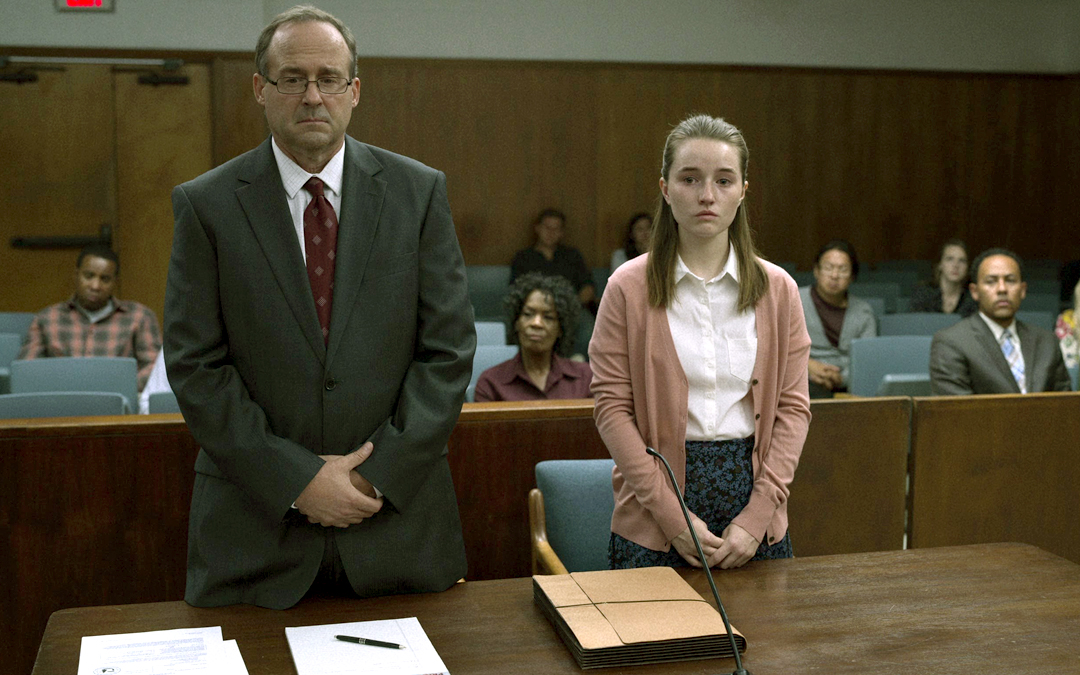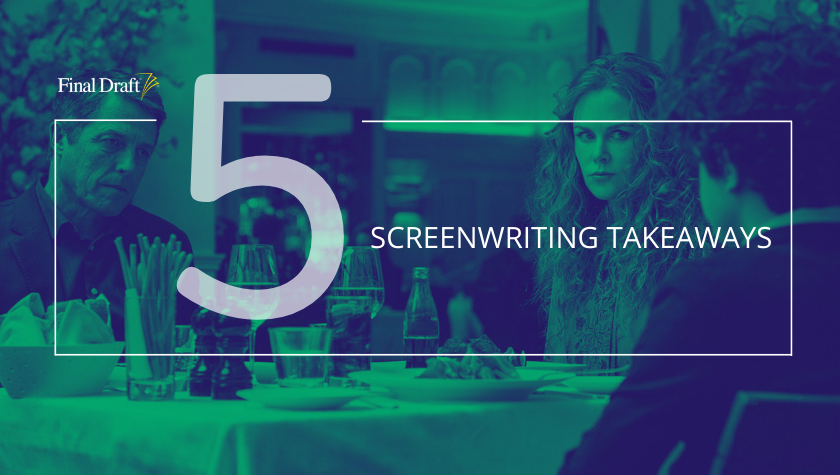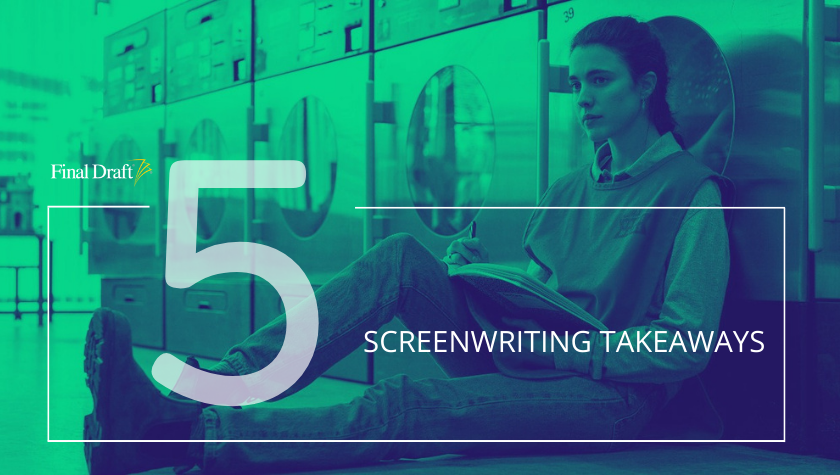5 Takeaways: 'I May Destroy You'
June 15, 2020
I May Destroy You is a dark comedy about sexual assault that is both powerful and endlessly watchable. Part of why it works so well is the backstory crafted by creator-star Michaela Coel, of Chewing Gum fame. Coel plays Arabella, who must piece together exactly what happened to her post pilot, but make no mistake, this is no crime drama. Rather, this story is about a woman subtly reckoning with the ripple effects of a haunting event in a naturally flawed and often funny way. Instead of jumping right in, the pilot gives us a clear picture of Arabella’s life before assault. This helps ease us into what will undeniably be a painful and poignant journey, as she works to reclaim her identity in the wake of the grief and shame that an assault can bring.
In a heroine’s journey it’s often stated that you must first give the character a backstory wound. Something they may have to confront or shed to reach their higher self by the end of their journey. The pilot episode of I May Destroy You is almost a master class in experiencing a character’s backstory wound in real time, while still learning typical backstory information. Here are some takeaways on how Coel masterfully gave us backstory in real time.
- Show old wounds in a succinct way. Coel shows us a woman stuck between two places when we first meet Arabella. She’s clearly in love with her on-and-off-again boyfriend who lives in distant Italy and refuses to consider London as an option. Meanwhile, it’s clear Arabella’s life is London-centric. She uses her undefined relationship as an excuse and escape from moving forward in her own life. The great line of, “I went to Italy for cheese pizza and one orgasm,” pretty much sums up her current love life. Finding a way to quickly show your character’s imperfections or wounds instantly gives an audience something to grasp onto and relate to. It’s unlikely there’s a viewer out there that has not been stuck in a go-nowhere relationship knowing that they could be making better choices, but choosing to stay anyway.
- Personifying fears can help with overcoming them. Arabella found fame through Twitter, and subsequently got a book deal to write “Chronicles of a Fed-Up Millennial.” Throughout the pilot, fans recognize Arabella for her work and want to take a selfie with her. This recognition quickly becomes a wound as a fan approaches Arabella and callously takes a selfie while Arabella is bleeding from a head wound, post assault. While Arabella wants to become known as a more serious writer, it becomes clear she will first have to confront her past identity and reckon with it. Coel created a literal embodiment of Arabella’s imposter fears through constantly throwing fans her way. It’s a great backstory device to consider how your character’s fears can become personified.
- Give characters faced with heavy themes a refuge. In a story dealing with such heavy themes, the protagonist needs a refuge and safe space, as well as characters to help reflect her beliefs and POV. Arabella has a rich world of friends who are family. She lives with an aspiring actress; a confidant she readily divulges secrets to. She has friends that will sit and swipe on dating apps while offering conversational asides that are actually pretty good advice. She also has friends with selfish and questionable motives who are nursing the wounds from crumbling relationships. These “friends” are ready to lead Arabella astray. If Arabella were Alice in Wonderland, she’s offered lots of white rabbits throughout the pilot—cocaine, men, and fun in lieu of work. Screenwriters take note that every minor character, even if sharing the screen for just a few moments, is tangible, real and given character details from wardrobe to dating app preference.
- Up the stakes by taking a left turn. Coel gives us story stakes in this real time pilot right away. Arabella is a writer on deadline, experiencing some terrible writer’s block and her agents aren’t having any of it. They want to put her up for a writer’s workshop, and Arabella has approximately 24 hours to turn in a draft she’s barely touched. Viewers are thrown into a world of color and countdown as Arabella tries her damnedest to tackle a blank page. This turns into a clever backstory device as the viewer’s expectations of story, tone and character drive are quickly thrown out the window when Arabella leaves her workspace for a quick drink, drugs, alcohol, and a group of friends and acquaintances soon turn a writing night into a night of debauchery. It’s deftly handled screenwriting, as hopes and dreams are tied to stakes in the first five minutes of the pilot, with no qualms about then throwing set-up work out the window for the sake of dramatic effect.
- Memory loss as story engine. In mining back story, writers are often asked, “what is your character’s most powerful memory?” To turn this classic question on its head, to rob your character of memory of a traumatic event—a common psychological coping mechanism for victims of trauma—Coel and her fellow writers have given Arabella a fatal flaw (although the term can hardly be used when referring to victims of trauma). But her lack of memory and backstory to an event can now be used as a story engine, as Arabella must reckon with the event of sexual assault to find her own narrative and to drive her life forward. Additionally, as a viewer, we are now hooked. We have a dimensional character experiencing something all too common, who must now retread her own story to set herself free.
Final takeaway: I May Destroy You’s protagonist Arabella is infinitely watchable because she has been given a rich backstory. Coel’s pilot immediately answers the age-old screenwriting question, why watch this woman on this day? Arabella is a woman about to experience a life-changing event that one-in-four women will all experience at some point in her life—a sexual assault. Coel has created a story with incredible stakes; the narrative of a woman interrupted that we want to root for, laugh with, and cry for. Because Arabella’s imperfections have been so aptly constructed, she is all at once an everywoman, and like no woman you’ve ever seen before.
Written by: Lindsay Stidham
Lindsay holds an MFA in screenwriting from the American Film Institute. She has overseen two scripts from script to screen as a writer/ producer. SPOONER, starring Matthew Lillard (SLAMDANCE), and DOUCHEBAG (SUNDANCE) both released theatrically. Most recently Lindsay sold PLAY NICE starring Mary Lynn Rajskub. The series was distributed on Hulu. Recent directing endeavors include the Walla Walla premiering (and best screenplay nominated) TIL DEATH DO US PART, and the music video for Bible Belt’s Tomorrow All Today. Lindsay is currently working on an interactive romcom for the production company Effin' Funny, and a feature film script for Smarty Pants Pictures. Lindsay also currently works as an Adjunct Screenwriting Faculty member at USC’s School of Cinematic Arts. You can follow her work here: https://lindsaystidham.onfabrik.com/- Topics:
- Discussing TV & Film




